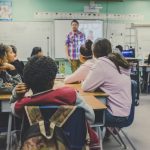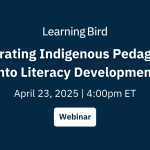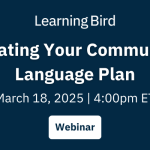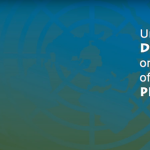Including Indigenous Perspectives While Learning at Home
Schools around the country are closing so families and staff can practice social distancing and limit the spread of COVID-19. However, many parents and educators are still searching for educational opportunities for learners. It can be difficult to develop enough ideas to fill childrens’ time. That is especially true when educators and learners have limited opportunities to interact. Many parents are also juggling working from home with caring for their children. It can be even more difficult for parents to integrate Indigenous ways of knowing and understanding while learning at home. Some Indigenous educators are stepping up to help. They will be live streaming short lessons on the Think Indigenous – Online Indigenous Education K-8 YouTube account.
Learning at Home With Indigenous Books
At Learning Bird, we wanted to offer educators ideas to support parents teaching their children at home. In particular, helping parents include Indigenous perspectives and content. We have come up with a list of books and novels written by Indigenous authors. These are books learners can read themselves or parents can read to their children. You can direct parents to access these books through their local library or any online bookseller. You will find a book that your learners will enjoy and learn from no matter which grade you teach.
Grades K-4
Go Show the World: A Celebration of Indigenous Heroes by Wab Kinew
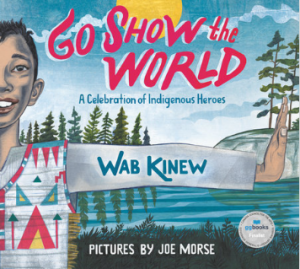
This book is by music artist, broadcaster, and politician, Wab Kinew and illustrated by Joe Morse. Kinew gives examples of Indigenous heroes from history and modern times. Some of these heroes are very well-known, while readers may be learning about others for the first time. It offers a wonderful opportunity to learn more about these heroes with slightly older children. After learning about these heroes from Kinew, what else will learners find out about them?
Tundra Books prepared a Discussion Guide for this book. You can provide it to parents to help discuss Indigenous perspectives at home with their children.
The Thundermaker: Kaqtukowa’tekete’w by Alan Syliboy
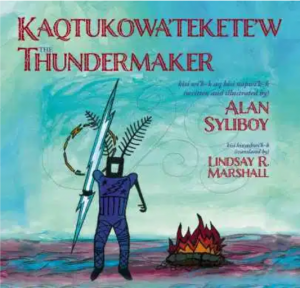 In this book by Mi’kmaq artist Alan Syliboy, Little Thunder learns about responsibility, tradition, and culture through teachings and stories. We see Little Thunder’s mother and his father teaching him in this book. Suggest that parents talk about the importance of stories and learning new things with their children.
In this book by Mi’kmaq artist Alan Syliboy, Little Thunder learns about responsibility, tradition, and culture through teachings and stories. We see Little Thunder’s mother and his father teaching him in this book. Suggest that parents talk about the importance of stories and learning new things with their children.
After reading Little Thunder’s story, they can explore other books Syliboy has written or look at his artwork on his website.
Grades 3-5
What’s the Most Beautiful Thing You Know About Horses? By Richard Van Camp
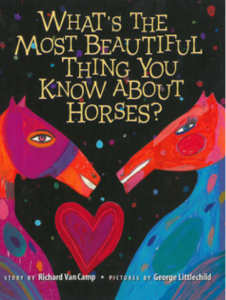
This book, written by Richard Van Camp and illustrated by George Littlechild, takes learners through a learning experience. When the main character wants to know about horses – he asks! He asks everyone he knows the question: What’s the most beautiful thing you know about horses? Learners will see how people hold different opinions and perspectives and learn what can come from questioning.
After parents read this book with their children, let parents know to encourage their children to ask questions. Remind parents that if they don’t know the answers, they can go on a learning adventure together to find the answers along with their children.
Grades 4-6
Hiawatha and the Peacemaker by Robbie Robertson
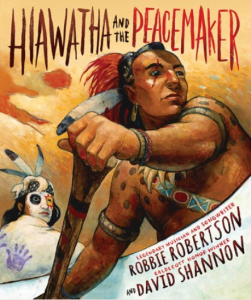 This book by musician Robbie Robertson retells the story of Hiawatha for younger audiences. Hiawatha was a warrior who convinced Haudenosaunee nations to stop fighting and unite. Through this message of peace, he co-founded the Haudenosaunee Confederacy. It is a wonderful opportunity to learn about historical figures, events, and stories. After reading this book, suggest to parents and learners that they explore more about the history of the Haudenosaunee Confederacy. Did you know the Confederacy’s governance system inspired the U.S. Constitution?
This book by musician Robbie Robertson retells the story of Hiawatha for younger audiences. Hiawatha was a warrior who convinced Haudenosaunee nations to stop fighting and unite. Through this message of peace, he co-founded the Haudenosaunee Confederacy. It is a wonderful opportunity to learn about historical figures, events, and stories. After reading this book, suggest to parents and learners that they explore more about the history of the Haudenosaunee Confederacy. Did you know the Confederacy’s governance system inspired the U.S. Constitution?
You can also suggest to parents that their children watch this book trailer by Abrams Books before reading. It can help generate interest, and parents can ask their children to make predictions.
The Chief: Mistahimaskwa by David A. Robertson
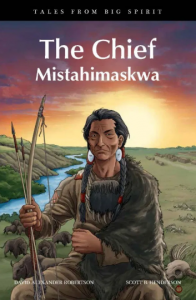 In this graphic novel by David A. Robertson, a young girl’s book about Mistahimaskwa, the Cree leader who played an important role during the 1885 North-West Resistance, comes alive. Sarah and readers will learn about this Cree hero and traditions and life during the 19th Century for Indigenous Peoples on the prairies.
In this graphic novel by David A. Robertson, a young girl’s book about Mistahimaskwa, the Cree leader who played an important role during the 1885 North-West Resistance, comes alive. Sarah and readers will learn about this Cree hero and traditions and life during the 19th Century for Indigenous Peoples on the prairies.
If this piqued learners’ interest, you can suggest reading some of the other books in the Tales from Big Spirit series.
Grades 4-8
Speaking Our Truth: A Journey of Reconciliation by Monique Gray Smith
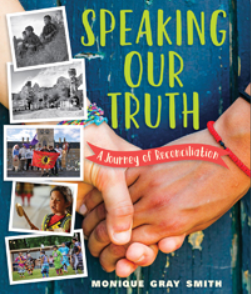 In this book, learners will journey towards reconciliation by reading residential school Survivors’ stories. Learners will also hear about the Truth and Reconciliation Commission and how governments and organizations implement their findings and Calls to Action. Aimed at slightly older learners, who can interact with this material more deeply, this book helps learners understand more about the impacts of the Indian Residential School System.
In this book, learners will journey towards reconciliation by reading residential school Survivors’ stories. Learners will also hear about the Truth and Reconciliation Commission and how governments and organizations implement their findings and Calls to Action. Aimed at slightly older learners, who can interact with this material more deeply, this book helps learners understand more about the impacts of the Indian Residential School System.
This book will create a wonderful opportunity for parents to take this journey with their children since there may be many new things to learn in this book for parents as well.
Grades 6-9
He Who Dreams by Melanie Florence
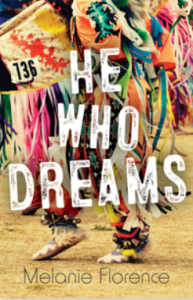 He Who Dreams, by Melanie Florence, is about a high-school student who struggles with his Indigenous identity and his desire to be a powwow dancer. Throughout the book, he finds ways to stand up for himself and participates in the activities he loves.
He Who Dreams, by Melanie Florence, is about a high-school student who struggles with his Indigenous identity and his desire to be a powwow dancer. Throughout the book, he finds ways to stand up for himself and participates in the activities he loves.
This book is a great way to show realistic modern-day Indigenous experiences and realities. Additionally, it offers a way to discuss following your dreams, even if others make fun of you.
Grades 9-12
Son of a Trickster by Eden Robinson
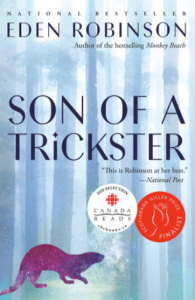 Son of a Trickster is the first book in a trilogy by Eden Robinson. It follows a high school student who has problems at home, with his friends, and at school. His journey to make positive changes in his life makes him realize his mother has been keeping a secret from him. This book is part of Canada Reads 2020.
Son of a Trickster is the first book in a trilogy by Eden Robinson. It follows a high school student who has problems at home, with his friends, and at school. His journey to make positive changes in his life makes him realize his mother has been keeping a secret from him. This book is part of Canada Reads 2020.
If you’re looking for ways to support parents addressing the topics in this book while learning at home, suggest that they look at the materials published by CBC that accompany this book.
Grades 10-12
This Place: 150 Years Retold by Kateri Akiwenzie-Damm et. al.
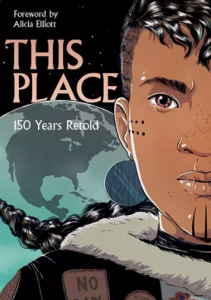 This graphic novel anthology from Indigenous authors retells moments in Canadian history from an Indigenous perspective and imagines what Indigeneity will be like in the future. The stories range from discussing Louis Riel to the Kanasatake Resistance to the Sixties Scoop.
This graphic novel anthology from Indigenous authors retells moments in Canadian history from an Indigenous perspective and imagines what Indigeneity will be like in the future. The stories range from discussing Louis Riel to the Kanasatake Resistance to the Sixties Scoop.
Each story will result in different discussions parents can have with their children about history, the environment, and how we tell stories.
Moon of the Crusted Snow by Waubgeshig Rice
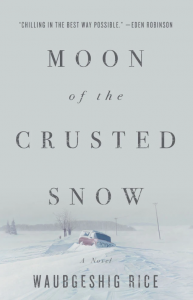 Moon of the Crusted Snow is by writer and journalist Waubgeshig Rice. It is a slim post-apocalyptic novel that focuses on a small reserve in Northern Ontario coping with losing contact with the rest of the country. The slow pace allows learners to explore the characters in the novel and how they deal with the events happening around them.
Moon of the Crusted Snow is by writer and journalist Waubgeshig Rice. It is a slim post-apocalyptic novel that focuses on a small reserve in Northern Ontario coping with losing contact with the rest of the country. The slow pace allows learners to explore the characters in the novel and how they deal with the events happening around them.
If you would like to offer parents a way to support deeper learning at home about this book’s themes, you can suggest exploring this ECW Press Book Club Guide.
Explore the Indigenous Books Catalogue at Home
Suppose none of these books are to your learners’ liking. In that case, you can explore the Association of Book Publishers of British Columbia catalogues. They have catalogues of Indigenous books for schools from 2007 onward. Each catalogue lists the appropriate grade range and cross-curricular connections for each book.
Which books have you been recommending to your learners? Who are some of your favourite Indigenous authors? Have you been coming up with other ways to continue including Indigenous perspectives as your learners learn from home? Please email us and let us know your strategies.




